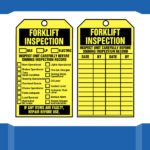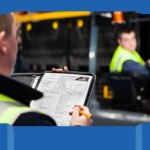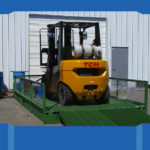
Common Causes of Forklift Accidents
Safety is the responsibility of each and every employee.
There are approximately 1 million forklifts actively working in the United States and approximately 1.5 million forklift operators. This has resulted in our country becoming known as one of the largest distributors in the world. With a steady rise in manufacturing, logistics and warehouse industries growing each year, industrial trucks will be utilized for some time in the foreseeable future.
With these large numbers of units in use, accidents do happen. Fortunately, organizations like OSHA set regulations to make working conditions as safe as possible, but accidents do happen no matter how many precaution you take. Most accidents occur from improper training, malfunctioning equipment and inattentive operation.
Following is a breakdown of the most common causes of forklift accidents:
1. Workspace Design
When you purchase a forklift, you must insure that it is a right fit for your needs. If you are working with minimal space, invest in a narrow aisle lift.
Tips for maintaining a safe area:
· Remove all obstructions at doors and intersections.
· Keep traffic volume low.
· Maintain a clean loading dock.
· Keep aisles uncluttered.
· Inform drivers of changing ramps and floor gradients.
2. Riding on the forklift load
Improper riding is more common than one may anticipate. Under no circumstances should a driver transport a worker on a forklift. On the other hand, no worker should use his or her body parts to balance a load.
3. Insufficient marking and warnings
In workplaces that have both foot and forklift traffic, it is absolutely imperative to mark forklift zones. Even if there are people walking through these areas, they know to watch out for passing machinery. There are many ways to mark forklift zones. While paint and standing signs are the first to come to mind, floor tape may be the most effective. It is easy to replace this tape if any tears happen and it is also easy to apply.
4. Speeding
When drivers become too comfortable they tend to speed and drive irresponsibly. Traveling too fast on a forklift can shorten the driver’s reaction time. OSHA advises that drives should stay at or below 5mph.
5. Operating with an elevated load.
Driving your forklift with a load that is too high can increase your chances of tipping or the load falling. OSGA regulation encourages driver to carry their loads no more then 4 inches off the ground.
Safety is the responsibility of each and every employee. If guidelines are not followed, workers should be held accountable. It is especially important for drivers to remain alert and able to remain responsible










I’m glad you pointed out that the OSHA regulations for forklift speed advise that it not exceed 5 miles per hour. My brother started looking for a job last month, and most of the options he’s considering are at warehouses that use forklifts. I think I’ll encourage my brother to find a company that uses regular forklift training and certification services so I can have peace of mind about his safety.